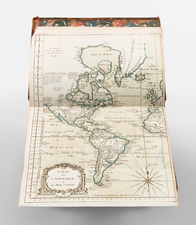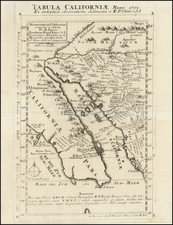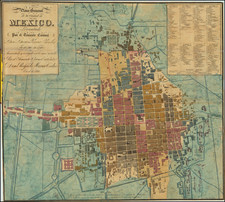Detailed map of a portion of the Gulf of California (or Sea of Cortez), centerded on Isla Tiburon and Isla del Angel de la Guarda.
The area shown includes Bahia De Los Angeles in Baja California, and the area west of Hermosillo.
Bahia de Los Angeles
Bahía de Los Ángeles, a region rich in history and natural beauty, is located in the central part of the Baja California peninsula. Originally known as Adac, it was home to the Cochimí people, the aboriginal inhabitants, with a population of approximately 3000 in the early 1600s.
The European discovery of the Bay came in 1539 by Francisco de Ulloa, the last expedition financed by Hernán Cortés. Initially known as Bahía de Lobos (Bay of Sea Lions), the area was further explored in 1746 by Jesuit missionary Fernando Consag. Consag, who sought to address the question of whether California was an island, is credited with giving the bay its current name.
The Jesuits played a pivotal role in the region, with the construction of a loading dock in 1752 to support Mission San Borja and explore the Baja California Peninsula. After the Jesuits left, local settlements, known as visitas, were gradually reclaimed by the locals.
By the late 19th century, interest in precious metals brought a new wave of activity. In 1900, another dock was built for exporting gold and silver from mines in the Sierra San Borja, San Juan, and Santa Martha. The San Juan silver mine at Las Flores, connected to Bahía by an eight-mile narrow-gauge railroad, was the largest in Baja, producing silver valued at 2 million U.S. dollars as of 2002.
In the mid-20th century, Bahía de Los Ángeles was a small community with families such as the Daggetts, Smiths, Ocañas, Navarros, and Corderos. Notably, Antero "Papa" Diaz, a significant figure, arrived with his wife Cruz Rosas Ortiz "Mama" Diaz from Mexico City to work at Las Flores mine. Diaz, who became the town's mayor, was instrumental in developing Bahía as a sport fishing resort, building a hotel, a school, a church, and an airstrip.
John Steinbeck, in his book "The Log from the Sea of Cortez," mentions his stay in Bahía de Los Ángeles. The region is also known for the "Museo de Naturaleza y Cultura," established in 1988 by American Carolina Shepard. This museum, a testament to the area's rich cultural and natural heritage, houses a diverse collection including mining and Indian artifacts, marine life specimens, and historical photographs.
Today, Bahía de Los Ángeles is a hub for ecotourism, attracting visitors with its unique history, natural beauty, and vibrant community spirit.
UNESCO Biosphere Reserve
In 2007, Mexican President Felipe Calderón in cooperation with the nongovernmental organization Pronatura Noreste, Mexico’s National Commission for Protected Areas, the Global Conservation Fund (GCF) and others established the Bahía de los Ángeles Biosphere Reserve to protect the unique ecology of the region.
The reserve covers an area of almost 1500 square milesand includes a portion of the Baja coastline, all 16 islands, numerous smaller islands and islets and the Canal de Salsipuedes and Canal de las Ballenas. The reserve protects a diverse marine population including many endangered species including whale sharks, fin whales, California sea lions and five species of sea turtle
The reserve is within the UNESCO "Islands and Protected Areas of the Gulf of California" Mexican World Heritage Site.











![(Aztec Tribute List) [Original watercolor showing tribute items paid to the Aztecs by subject towns] Mendoza Col. part 1s Lorenzana, Aglio 1, Vol 22...](https://storage.googleapis.com/raremaps/img/small/102321.jpg)
![(Mexican Antiquities - Photography) [Great Palace, Mitla, Oaxaca, Mexico; Grand Palais, à Mitla] [Plate 10 from:] Cités et Ruines Américaines](https://storage.googleapis.com/raremaps/img/small/93939.jpg)

![[ Earliest Obtainable Map of San Diego Bay ] Plan du Port De St. Diego en Californie. . . 1782 [with] Plan Du Port et du Departement de San Blas . . . 1777](https://storage.googleapis.com/raremaps/img/small/90982.jpg)